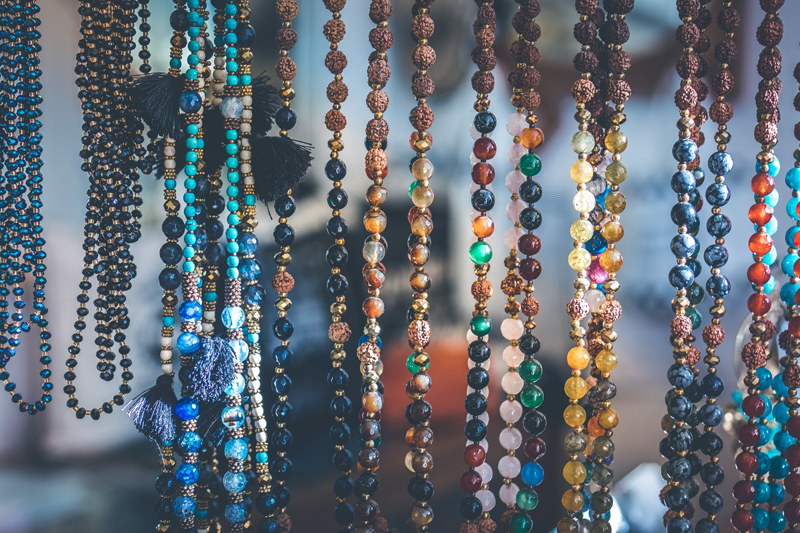Lucite Beaded Corsage


Making your own corsage means getting exactly what you want or being able to wear a corsage just for fun. I made the one shown above for my daughter who has a collection of non-wilting, handmade corsages.
To make this one, you'll need:
Thin beading wire OR beading needle and thread
Lucite flower and leaf beads (there is a link at the end of this article)
Accent beads- I used a mix of 4mm crystal bicones, 5 mm crystal bicones, size 11 seed beads and small pearls
Elastic
A filigree piece for the base
Thread and needle to sew the elastic
Scissors
If you're using wire- wire snips and pliers
If you're using thread- glue or clear nail polish to seal knots
The elastic I used is 5/8 inch wide fold over elastic. Fold over elastic comes in a bunch of colors and has a shiny side which goes well with fancy dresses. The piece I used is unfolded.
Cut two pieces of elastic, one a half inch long than you're wrist circumference, the other 2.5 inches long. Sew the ends of the longer piece together to make the bracelet. You can hand stitch this or use a sewing machine. Set both pieces aside for now.
The filigree piece I used was out of my stash, but you should be able to find filigree shapes easily enough at many bead and craft stores. They come in all sorts of shapes like butterflies, flowers and geometric shapes. Pick one that you love.

Lay out the Lucite flowers and leaves on your piece, get an idea of the placement you want for them. Remember that each hole needs to be over a solid part of the filigree. You'll be working the design in layers and from the center out. So if you want the center to be a larger flower, you'll plan your leaves first since it's the first layer.


Now you'll start either wiring or stitching your pieces into place. I stitched, and used 2 needles in a cross weave to stitch each component into place. After I stitched one piece in and brought the needles to the back of the filigree, I tied a knot, so if it snags on something, she'll lose one or two beads, not the whole thing. If you're wiring, wrap the wire around the starting place on the filigree and attach each piece. The leaves are sewn directly to the filigree, the flowers have a bead in the center to hold them on. You can stack and combine some flower components, like the pink ones in my example are two pieces that together look much like a daffodil.

I could have added a lot more flowers and shiny bicones to this, I've a weakness for 50s and 60s costume jewelry, but since it's for my daughter, she decided when it was enough.
After finishing embellishing the filigree, stitch it to the middle of the 2.5 inch piece of elastic, then turn the bracelet piece of elastic dull side out and put it around the filigree so stitching is on top of the back of the elastic sewn to the filigree piece. Fold the short elastic piece over the bracelet, and stitch it closed adding a couple small tack stitches to keep it in place over the seam on the bracelet. Turn the bracelet shiny side out again so the filigree is on top.
Lucite is a kind of plastic, but before you go ICK PLASTIC! You might want to try it out. It's very lightweight, and these beads have gorgeous details. You can even tint them using alcohol based links for some gorgeous shading effects. I'm wild for the vintage look of the beads. The ones used above were given to me for review purposes (I still need to review them!) by The Hole Bead Shoppe, Kelli carries a fantastic selection including some great sampler kits that are color themed.
The elastic used is some that I bought from Elastic By The Yard.
You Should Also Read:
Tiny Rose Ring
Daisy Chains

Related Articles
Editor's Picks Articles
Top Ten Articles
Previous Features
Site Map
Follow @shala%5Fbeads
Tweet
Content copyright © 2023 by Shala Kerrigan. All rights reserved.
This content was written by Shala Kerrigan. If you wish to use this content in any manner, you need written permission. Contact Shala Kerrigan for details.






